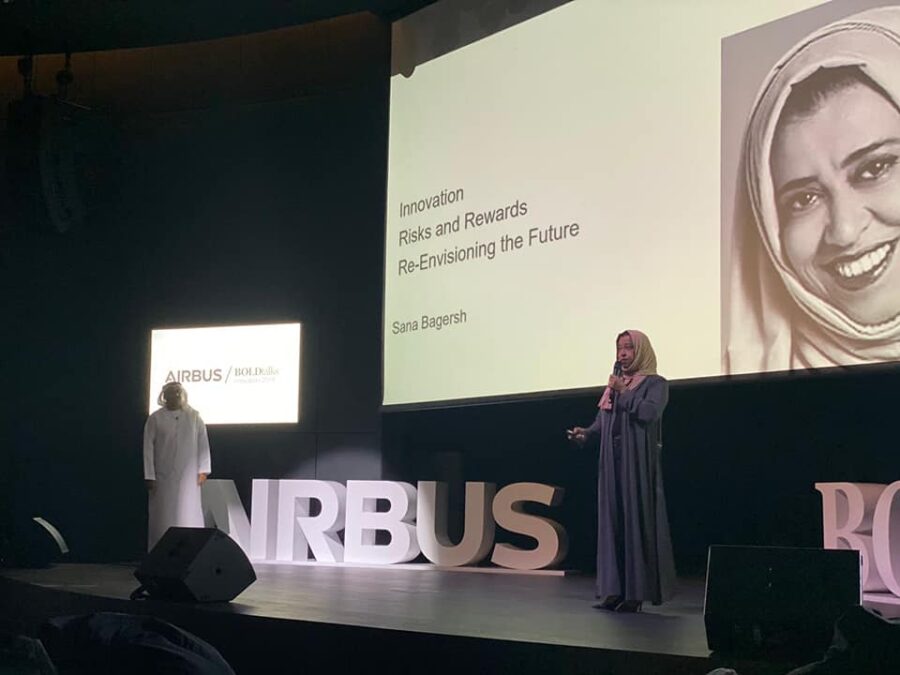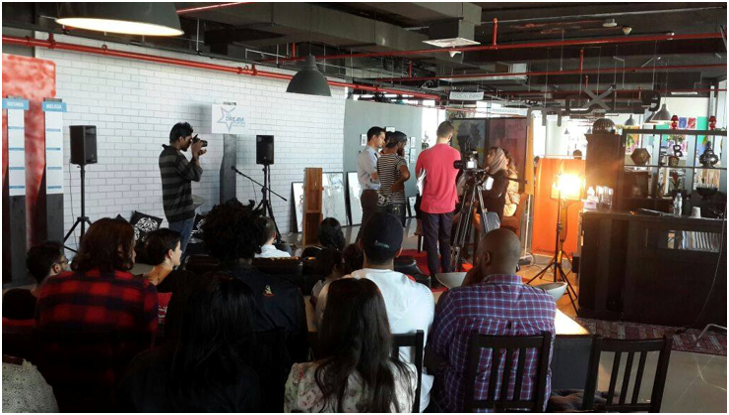2 Minute Talk with Souad Mohamed Al Hosani, President of Nexus Business Services/Nexus Agencies
Topic: Setting up a business 1) What types of documentation do start-up businesses and entrepreneurs need to consider? It really depends on the type of company they are establishing. If it is a branch of a foreign company, they will need documents such as the Mother Company Commercial License/ Registration Number, the Board resolution to set up the office in the other country and the appointment of a General Manager to finanlize the paper work. All these papers need to be attested and authenticated at
GETTING THE RIGHT ANSWERS
A multinational client approached us recently with a request for market research. The client had a sophisticated research platform that they use successfully in North America, and they wanted to replicate the results here. After studying their methodology and the survey form, we advised them (delicately) that they had the wrong survey, the wrong platform, the wrong environment and the wrong audience. We told them that we would be able to deliver the mechanics of the requirement (ie gather the information for them using their tools), but the data would be virtually useless to them. The client’s survey (a proprietary, “signature” questionnaire) was eight pages long, with complicated rating scale questions (very pleasant, somewhat pleasant, neither pleasant nor unpleasant, somewhat unpleasant, very unpleasant etc….) that needed to be translated into Arabic, Urdu and Farsi…and had to be administered via phone or email across a few markets in the Gulf. We explained that the cultural, demographic, linguistic, social and indeed, geographical, dynamics of this region required considerable modification to both the survey and the methods of gathering the data. Eventually, we worked together to deconstruct the “proprietary, signature questionnaire” into simple questions with direct answers, that maintained conformity and integrity across multiple languages. And we mapped out the locations that provided the most representative sampling possible and created a mechanism whereby the data would be gathered at the most productive times. The one universal truth in market research is that people everywhere do not like to participate in research. They do not like to be called at dinner time by a chirpy telemarketer asking them how they dispose of their household waste, and even less by a clipboard wielding interviewer promising “just a few questions”… We tried during the market research process with the client to guard against “interview bias,” a problem doubly compounded by the fact that we were dealing cross culturally and in multiple languages. We all know that it is virtually impossible to eliminate bias, but the most important thing is to be aware of these biases and to minimize them as much as possible. We identified certain biases that we needed to be especially mindful of in this instance. One was “moderator acceptance bias,” and this is where the respondent tells the questioner what he or she wants to hear, another is “leading acceptance bias” and this is where the respondent asks for explanation and the questioner starts putting words in the respondent’s mouth, and most importantly the “misunderstood question bias” and this is where the respondent doesn’t understand the question because of a different interpretation of the question due to the way it relates to...
HOW TO DEVELOP AND REFINE YOUR COMPANY’S MISSION AND VISION STATEMENTS
So you’re thinking of developing your vision and mission statements, or refining your existing ones? Good for you. But you need to think… is this something genuinely integral to your company’s business strategy, or just something that will look pretty in a plaque in your reception area? Unfortunately, a large number of companies (and some we confess are our own clients) have nice sounding vision and mission statements that don’t really filter through their organization and have diddly squat to do with their “raison d’être” (reason for being). You probably know some yourself… their vision/ mission states ‘customer service’ and then you call them and get a dumb receptionist who puts you on hold for 10 minutes and then forwards you through three departments before you finally get a dead dial tone. That’s why you should ask yourself if your vision and mission statements are for real. If you’re not really sure, then grab yourself a couple of aesthetically pleasing mission and vision template statements off internet sites (some offer them free), but if you’re serious then read on… Visions should be articulated at the top, and they should define why the company is in business. The vision should include broad intent and aspirations for the future. It should have an enduring quality and have the ability to inspire. Remember this will be the battle cry that will rally your entire company to fight for you, so take time to do it well. Where you get into more concrete purpose and direction is in the mission statement. It gives guidance to the company and motivates staff by defining priorities. If you want a kick-behind mission statement then get it as close to specific as you can, and make it relevant to your stakeholders, including customers, shareholders, employees, partners and vendors. So what should you keep in mind when drafting your mission statement? In our client strategy workshops we emphasize the need for a key theme around which everything revolves. “Everything” includes four elements: value, realism, specificity and optimism. The flavors of mission statements vary depending on the company. Yours will depend on the industry you’re in and the type of company you want to be. Some companies choose short term goals and then tweak their mission statement frequently, and some state longer-term objectives. In today’s climate, and especially in rapidly evolving industries (say technology), we recommend short-term goals that are adjusted at least quarterly to be able to address new business opportunities. (Some brash top end internet companies even do it monthly!) Companies in more static environments also need to review and revise their vision and mission statements periodically....
INTELLIGENCE IN BUSINESS
“BizBox” – Is it a brochure, a flyer or a sales kit? Often at BrandMoxie we have a client who comes to us asking for a ‘brochure’ without a clear strategy on what the piece of marketing collateral is intended for. Here we offer insight on how to fine tune your marketing collateral to fit your specific business needs. Usually marketing literature are required to help a customer make a buying decision. Because the development of such material can be costly in design, content creation and production, it is important for the business to determine the kind of ‘collateral’ required to achieve the specific business goal (which is almost always to convert a potential customer into a real customer). The “Hand Out and Leave Behind” Brochure As the name suggests, this is the brochure that you leave behind after your contact with the prospective customer. This brochure provides a good outline of your products and services and with it the specific benefits it offers the customer. It is important that your copy is punchy and has a clear ‘call to action.’ It also has to be relevant otherwise your ‘leave behind’ brochure will probably be left behind in the garbage bin! The “In Response’ Brochure This is the brochure that you send when someone is interested in your product or service and you want to provide information that could help them make a buying decision, basically to take them to a ‘stage two.’ This brochure should list all the strong benefits and features to persuade the customer, and hopefully close the deal. The Catalogue This is ‘brochure’ that is a listing usually in photos and prices. It is important that the catalogue does justice to the products otherwise it is best that it should be produced at all. So the quality of the photos and printing are immensely important to market the products. Such catalogues can be expensive to produce, and distribute, if they have many pages. These days ‘catalogue’ dependent businesses produce small printed versions and ask customers to browse more expanded online versions. The Point of Sale Flyer This is usually located strategically at retail points, and usually come in the form of a quick and brief read – often a flyer – to help the customer progress towards the buying decision as they come close to the ‘buying window.’ Or it is something the customer may scan over quickly and take with them to read at home. For the flyer convenience, visibility, attractive design and brevity of copy are all important. The Direct Mailer Sometimes a marketing strategy calls for a direct mail campaign, and this...
GROUPON, COBONE, GONABIT…SHOULD YOU USE THEM TO MARKET YOUR BUSINESS?
At BrandMoxie we work closely with entrepreneurs and SMEs in exploring new, affordable and efficient ways of marketing. Many of our clients face shrunken marketing budgets and slowing business cycles, and recently more and more have been seeking our advice on whether they should run marketing programmes through group buying websites such as Groupon, Cobone and Gonabit. These entrepreneurs see their competitors selling their services this way and wonder if it makes sense for them to do it as well. So for all of those who have asked us and wondered, read on…. As a business owner you scratch your head and think that since everyone is using group buying websites, then they must work. They work beautifully – with almost no caveats – if you’re the consumer. As customer you’re getting great value deals and promotions at lower price thresholds than ever. But – if you’re the service provider you have to assess the opportunity carefully before jumping in. Consider the business model: your service is offered for a limited time, to an unlimited number, and usually becomes active when a certain number of people join the deal. The powerful marketing catalyst is that it gets all those interested in ‘the deal’ to aggressively push the offer to friends and family. So the consumer gets a great deal, you make new sales (without spending money for marketing), and the group buying site gets its margin. Perfect win-win, right? Well, not always… The big advantage that these services offer a business owner is that they can build awareness about the company (and the offer) through their mass mailings. Groupon, for instance, sends their ‘Deal of the Day’ in the US to a subscriber list of 70 million customers! All the group buying websites require you, as the business owner, to offer a big discount over your usual price, and to pass on a sizeable margin, to the group buying site as its commission. The idea is that you would make less money per sale, but you make more on volume, and you win new customers as well. Where can it go wrong? For one, the discount you have to offer can sometimes be so steep that it cuts too much into your profit, and may ultimately not be worth it. That’s especially if you’re already on tight profit margins. If your profit margins are wider then you may be able to sustain offering the service at hefty discounts, in exchange for the promise of future returns. Clearly the advantage may be better to you if you’re a service business, such as a hairdresser, as opposed to a product provider,...
2 Minute Talk with Sultan Saeed Sultan Al Darmaki, Owner and Managing Director of the Al Darmaki Group
Topic: Managing staff 1) What key personality traits does an entrepreneur need for a successful business? Persistence: Never giving up no matter what mistakes you made or what you go through Open-Mindedness: Always listen to your employees, customers and other companies because there is always room for more things to learn and more improvements





